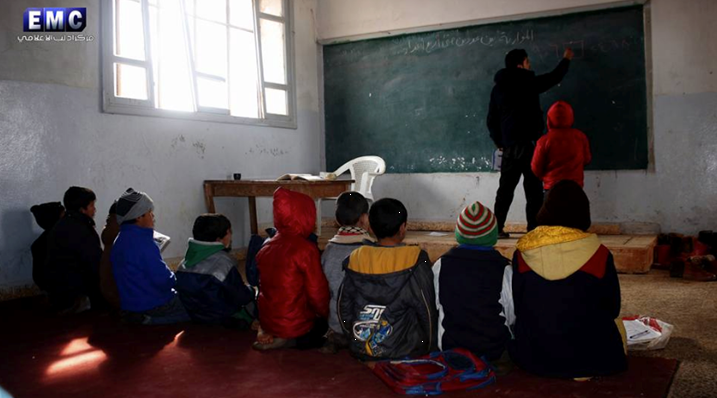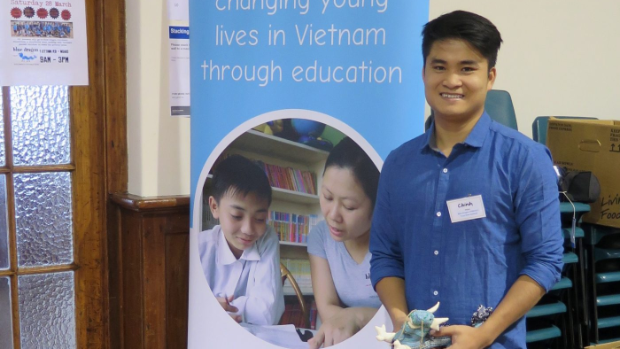Japón/Mayo de 2017/Autor: Michael Penn/Fuente: The Japan Times
Resumen: La educación en Japón, dentro del nexo de negocios, ciencia e internacionalización, está desarrollando iniciativas progresistas. Una de esas tendencias es trasladar la enseñanza universitaria de las aulas de ladrillo y mortero a la esfera en línea. Esto podría ser, en su forma más modesta, simplemente recursos suplementarios para la experiencia en el aula que los estudiantes pueden usar para estudiar mientras están en casa o viajando en el tren, pero potencialmente podría evolucionar a una forma más común de aprendizaje a distancia también. Los miembros del personal de las universidades japonesas de élite ya están desarrollando cursos en línea a gran escala a través de un proceso de ensayo y error. Jeffery Cross, profesor del Instituto Tecnológico de Tokio y uno de los líderes de este movimiento en Japón, dice que hay ventajas en el cambio a los cursos en línea. «Si un estudiante no puede llegar a clase, tienen ese material cuando quieren. Pueden controlar el contenido. Por ejemplo, puede reproducir los videos a dos o media velocidad «, explica. «También tenemos subtítulos, así que si su comprensión auditiva en inglés no es tan buena, pueden leer el texto y escuchar lo que se habla».
Education in Japan, within the nexus of business, science and internationalization, is currently developing progressive initiatives.
One such trend is to move university teaching out of brick-and-mortar classrooms and into the online sphere. This could be, in its more modest form, simply supplementary resources for the classroom experience that students can use to study while at home or commuting on the train, but potentially it could evolve into a more common form of long-distance learning as well. Staff members at elite Japanese universities are already developing full-scale online courses through a process of trial and error.
Jeffery Cross, a professor at the Tokyo Institute of Technology and one of those at the forefront of this movement in Japan, says there are advantages in the shift to online courses.
“If a student can’t get to class, they have that material whenever they want. They can control the content. For example, you can play the videos at twice or half speed,” he explains. “We also have captions, so if their English listening comprehension isn’t that good they can read the text as well as listen to the spoken.”
Cross’ team is not only developing course content, but also its own yuru-kyara (Japanese animated mascot character) — a cherry blossom-pink-haired young woman named Sakura Ookayama. Sakura helps to make the lessons more friendly to high school students and encourages them to be more inquisitive and to pay attention to how to use the content in the correct manner.
Of course, interaction with Sakura can never be the same as being in the same classroom as a human instructor, but Cross notes, “If you have 1,000 students in a class, there’s probably not that much interaction with a faculty member anyway.”
At present, only a minority of Japanese universities are involved in this shift to online teaching, but the number is expanding. If a system of cross-credit online courses were to develop, it could ultimately allow students to benefit from top-of-the-field professors even when those instructors are based at universities other than their own.
Beyond university studies, the Japanese company Coursebase looks to help manage the education of graduates. Traditionally, freshman entrants to Japanese companies undergo a substantial series of training sessions — whether it be to learn about their company’s products and those of their competitors; to understand manufacturing and sales techniques and legal compliance issues; or to prepare for further exams to gain official qualifications. Coursebase offers a “learning management system,” which helps companies keep track of which of their employees have completed what types of training.
Co-CEO John Martyn describes Coursebase as “content agnostic,” meaning that each company decides what it wants its employees to learn about. As an example, he cites a manufacturer that needs all of its 40,000 employees, who are spread across the country, to renew compliance training every six months. Instead of taking the enormous time and expense of transporting the employees to a brick-and-mortar classroom, online course material could be automatically managed and delivered via the Coursebase system, which can keep track of each individual employee and even send out reminders to those who are slow to respond.
“The human basically just watches the dashboard and exports reports,” Martyn says, “The whole process is automated.”
While this basic idea isn’t entirely new, Coursebase makes its system available on all internet browsers and it is optimized for mobile platforms to create a better user experience.
A more specific education technology company is Eigooo, which focuses on teaching the English language to Japanese students. The president of the company, Mizuki Nozue, explains that, for now, Eigooo’s program is based on a mobile-phone application that matches up Japanese students to English teachers, who then engage together in a chat.
“The truth is that most Japanese study English on their phone, like when they are on the train, or somewhere else where they can’t use their voices,” Nozue says.
There is no verbal communication with the Eigooo app, only the text chats. The objective is to build up the user’s English fluency by having them ask questions and give responses in real time. Teachers interact with the students and send them electronic feedback to improve their accuracy.
All of Eigooo’s English teachers are based outside of Japan; responding from many countries around the world, they are never in the same nation as their Eigooo students. The overall effect of the Eigooo system bears similarity to that of Tokyo Institute of Technology and Coursebase — collapsing physical distances by means of internet and mobile technologies, leaving institutions and individuals freer to accomplish other tasks wherever they may be, and to provide economic savings on travel, facilities and personnel.
Clearly, the possibilities of the new technologies are moving faster than the ability of the majority of the world to absorb and adapt. Japan is no exception in this regard, and the mainstream of its education system has barely begun to react. How most young people are being taught here is still more appropriate to a 20th-century industrial economy than to the developing 21st-century information technology society.
Nevertheless, there are some pioneers who are indeed preparing students to be technologically aware, innovative and responsible global citizens. Seisen International School in Tokyo’s Setagaya Ward is a particularly impressive example.
This school puts iPads in the hands of kindergarten students, and while teaching them about the four seasons it lets them do their coloring practices electronically. Use of such technology and the encouragement of teamwork and creativity blends seamlessly in small classes consisting of about half a dozen 5-year-olds. When the kindergarten students finish their assignments, they simply push a button to send their work to the teacher’s screen for review.
“We’re aiming to make possible a task that didn’t previously exist,” says David Towse, the information and communications technology integrator — the teacher — for the kindergarten students. “We really redefine and modify this task, which you just couldn’t do with pencil and paper.”
By the time these students are high school age, many of them will have become both proficient with technology and creative in their approaches to problems. They are clearly set to become leaders of the next generation.
Seisen International School’s current high school students are also encouraged to research their own science projects by looking into the latest academic journals online before actually building some of the devices that they themselves conceive. One such student summed up the trajectory of technology in education in her own words:
“I think that these days there’s so much technology around us, that simple facts can be obtained everywhere. There are so many things that before only people could do, but now computers and phones and all these other devices can do them for us.
“One of the only things I think that humans can do better than these things is to innovate and to be creative.”
Fuente: http://www.japantimes.co.jp/community/2017/05/14/issues/liberating-young-minds-technology/#.WRjZbbjau00

















 Users Today : 100
Users Today : 100 Total Users : 35415943
Total Users : 35415943 Views Today : 132
Views Today : 132 Total views : 3349168
Total views : 3349168